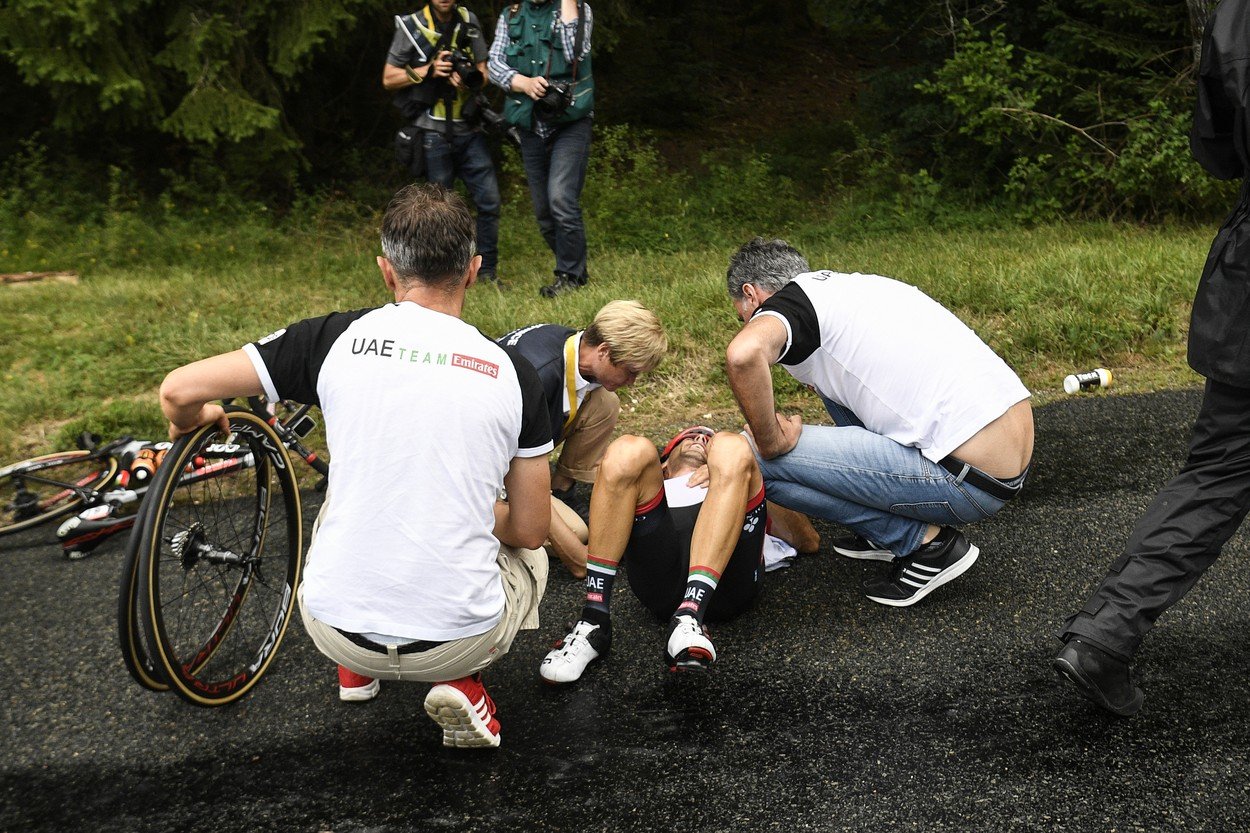I caught up with Dr Jost Paul-Henri after Stage 6 of the Dauphiné. “It was a good day for us,” he said – presumably meaning no crashes. The experienced anaesthetist sounded relaxed and happy that his medical expertise hadn’t been needed.
Neutral medical assistance
Each race team of Le Tour de France has its own medical staff looking after the welfare of its riders, but its organisers, the Amaury Sport Organisation (ASO), provide a neutral medical team to handle traumas. I asked Paul-Henri what he’ll be doing come Le Tour?
“I’m the medical director of the Dauphiné, but in Le Tour de France I’m second to [Dr] Florence Pommerie.” So what do you do? “During the race, we just follow the riders and if there is a crash…” you intervene? “Yes.”
Everything in its right place
You’d be forgiven for thinking that much of Le Tour is spent waiting for something to happen. Although traumatic crashes stick in the memory, they are thankfully rare. But that doesn’t mean the medical team should be complacent – they need to be switched on to the race’s tactical developments.
https://www.youtube.com/watch?v=rGp-s4zIDQw
“The most difficult part of the job is to make a good position of each of the ambulances depending on the situation of the race.” In other words, Paul-Henri is constantly balancing the need for his vehicles to be in the best position for any medical emergency – without disrupting the dynamics of the race.
“We try to be at the best position… to have two vehicles per group.” So, if you’ve got a breakaway and the peloton are chasing, you’re comfortable? “Yes”, replies Paul-Henri, “and we try to have as little distance between the peloton and the ambulance as possible.”
The practicalities
I ask what the difference is between the Dauphiné and Le Tour. “For the Dauphiné we have one main car and four ambulances, but for Le Tour we have two main cars, four ambulances, and one motorcycle.”
This motorcycle plays a critical role in reaching cyclists stranded in Hors Catégorie stages where larger vehicles struggle to climb quickly, and Richie Porte’s 2017 crash into Chambery demonstrated the close relationship the ASO medics have with France’s air ambulance service.
Critical support
Paul-Henri sounds so calm he could be talking about being aboard a Mavic neutral vehicle. But the reality is sobering – Paul-Henri was the attending medic at Michael Goolaert’s tragic death in Paris-Roubaix earlier this year, so he’s acutely aware of the risks that Tour cyclists take.

I ask whether the neutral medical team are consulted by the ASO during the route planning stage. “We are involved before the Tour de France. We are involved in decisions for critical stages. We work all the year together [with ASO] and we know each other very well.” I confess that I was shocked at the severity of Le Tour’s 2018 route and ask if there any stages that cause Paul-Henri concern? “No, I don’t think so…” and I can’t help but think of Dr Pommerie’s remark that she’s always surprised by the peloton’s “resistance to pain… their will, and their kindness too…”
Rider welfare is the priority
I ask Paul-Henri about the relationship with the teams, which he says is “… very good because we work together to do the best with the riders – our cooperation with the UCI and the anti-doping team is great as well. But we’re here for the trauma, as we say en Francais, ‘complimenter’.”
“We go with the medical staff to talk with each other, if there are any problems with the riders, we’re there at the disposition of the medical teams. But, fortunately, they do not often have to go to the hospital.”





